| 1 | Eyelash viper |
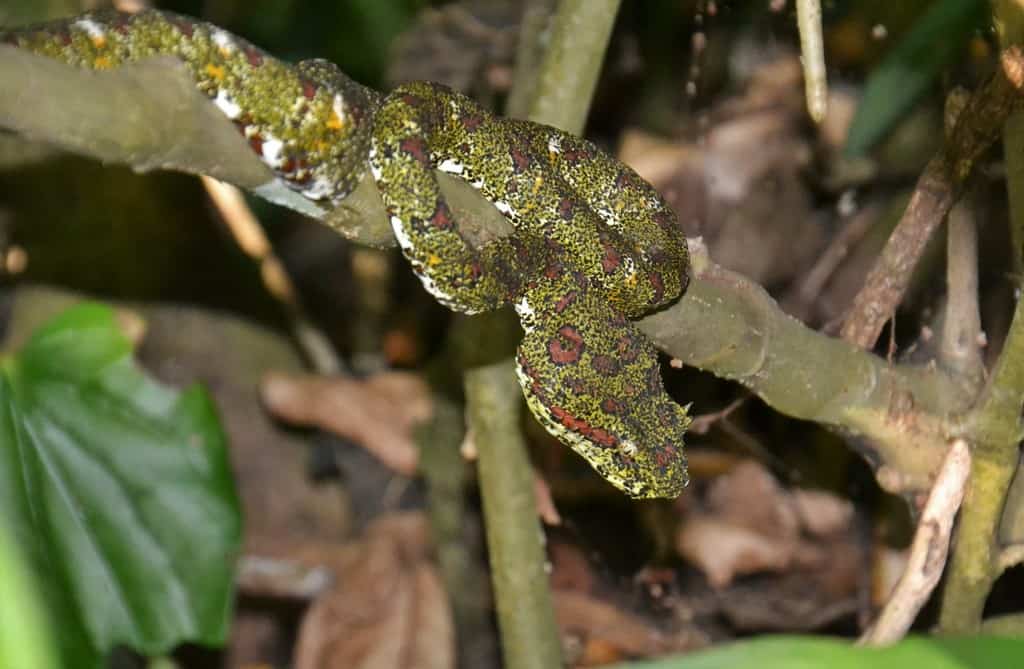
The eyelash viper is probably the most variable snake in the whole Western hemisphere. With little variation in the genetic code, it manages to sprout an endless variety of new, skin-deep colours, without affecting its length or personality. The eyelash viper doesn’t even have a “regular” colour. Yellow is common, but so is grey, red, or frosty white. In Ecuador, a common variety is the Christmas eyelash viper: jungle green intermingled with white and red. These colours are all plucked naturally from the wild rather than bred in captivity.
Something in the eyelash viper’s genome allows new colours to spring up without warning. The colours correlate closely with habitat. Eyelash vipers have a tendency to crawl out of banana boxes shipped overseas, and these snakes tend to be banana yellow. Those next to bromeliad plants tend to be brick red.
However, the colours have no correlation with region. You could come across a red, yellow and green eyelash viper within minutes, all in the same Peruvian village. This is a venomous snake which is usually survivable. Swelling and vomiting are two symptoms.
| 2 | Malabar pitviper |
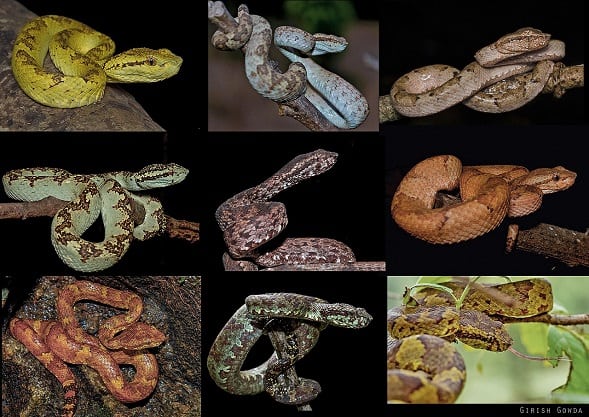
Surely the most multicoloured snake in the eastern hemisphere. The Malabar pitviper lives in the Western Ghats mountain range of southern India, a place of rolling forested hills rather than sky-scraping glaciers. It has a moderately dangerous venom, which normally causes swelling lasting one or two days. The Malabar pitviper can be any shade of the forest, ranging from banana yellow to moss green to twig brown.
This species has become a favourite of social media due to being perhaps the bluest snake on Earth. Only a small percentage are blue, but that honoured group is a true, rich blue rather than the slightly blue tinge that other snakes possess. Even the regular green members seem to be more vibrant than usual. There’s at least 15 colours, which appear totally at random.
Unlike many snakes, Malabar pitvipers begin life with duller colours. They start as a mottled brown, before sprouting fabulous colours like a peacock in adulthood. Despite the varying colours, Malabar pitvipers are closely related by genetics, and males and females of wildly different colour regularly get cosy with each other.
| 3 | Velvet swamp snake |
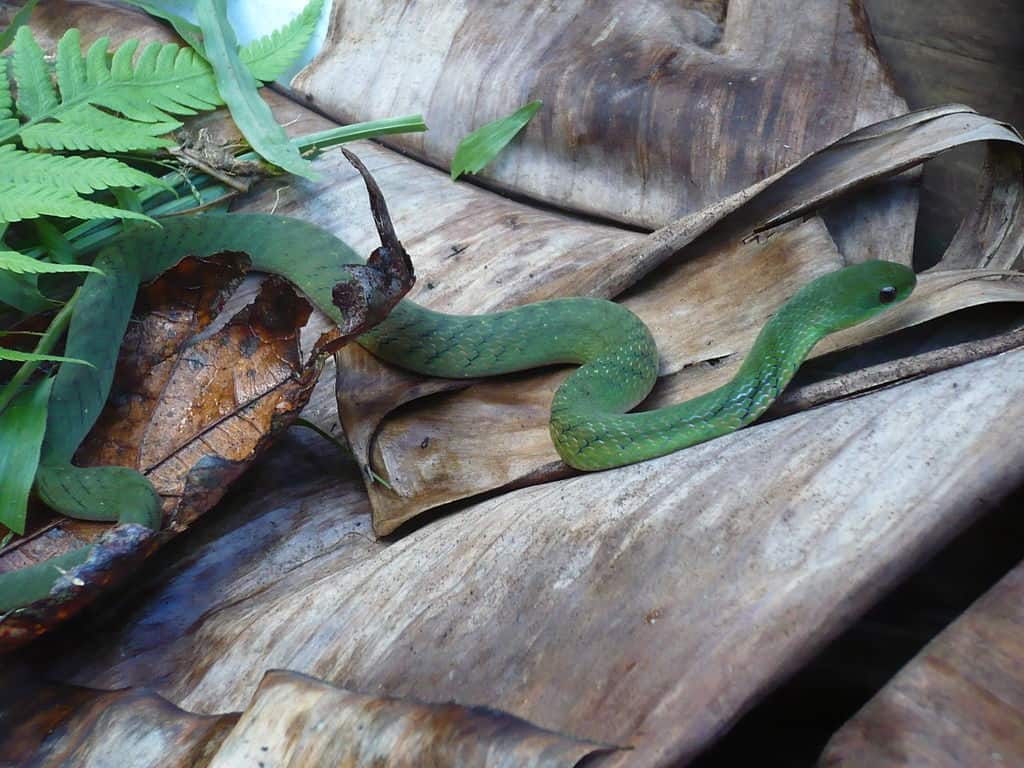
A snake of rainforests and mixed forest-grassland, which primarily inhabits Ecuador and Colombia. The velvet swamp snake averages at 60cm, and has similar fine patterns throughout, but varies wildly in colour. Green, red and turquoise blue are all possibilities with this snake, appearing at random.
Velvet swamp snakes (Erythrolamprus typhlus) are normally spotted resting on vegetation one metre above ground. As you tiptoe closer, subtle neon spots manifest, and white lines begin to appear between cracks in the scales. The belly is a separate colour, but this has variety of its own, ranging from white to yellow to red.
The one which fits the velvety name best is the blue morph, a rare blue snake to exist. This looks like a new plush in the aisle of a toy warehouse, and its black eyes add to the friendliness. Velvet snakes are non-venomous, and while they’ll grow agitated as you first approach, they calm down within a few minutes, allowing you take photos (the jury’s out on whether they’re posing).
| 4 | Amazon tree boa |

The only boa on this list, the Amazon tree boa is a constrictor with a reputation of being extremely vicious in captivity. In the wild, they pretty much have three colours: grey, dark orange, and yellow. But nature takes those and throws them into a blender, opening up a kaleidoscope of possibilities.
Some are fully orange or fully yellow, but others have zigzags, some have black hourglasses with hazy orange vapour clouds, and some would probably burn your hand if you touched them. The Amazon tree boa above has no orange at all.
Grey is the most common colour, dubbed the “garden” variety. A study journeyed to remote Amazon streams, and in the Guirindó creek, 50% were grey, 40% dark orange, and 10% yellow. In Camaleões and Baixão creeks, 60% of Amazon tree boas were grey, 35% dark orange and 5% yellow. Captive breeding is another story still. One popular manmade variety is the tiger, with sharply alternating orange and black markings. However, this too originated from a wild boa, a fully black individual which crawled out of a crate from South American in the 1990s and was bred with an orange (not the fruit).
| 5 | Western ground snake |
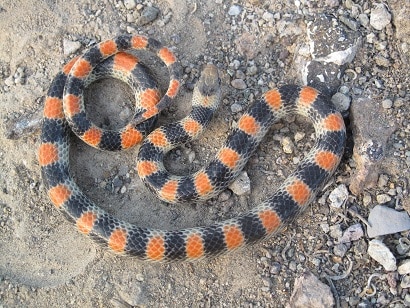
This harmless snake is found in the southwestern USA, including Arizona, Nevada and New Mexico, and also northern Mexico. It was once divided into five subspecies based on appearance, but it later transpired that there was no genetic difference; they just have a naturally huge variety in appearance. A typical Western ground snake (Sonora semiannulata) has alternating black and red bands, but some are yellow and grey, while others are a uniform grey with no patterns. Black and white zebra colours also exist.
The bands can change in thickness, becoming broken or missing as the tail approaches, while some ground snakes have a dense black cap on their head. The red and grey bands can even rotate 90 degrees and become parallel vertical stripes, rather than horizonal. There’s even morphs within morphs, as the red bands are sometimes a lighter orange.
Four main morphs exist, which aren’t separated by region, but live side by side, in the same canyon or slice of desert, interbreeding yet never becoming diluted. Some morphs have a strong resemblance to coral snakes, which gives them a survival advantage. This 35cm snake mostly eats spiders, centipedes and crickets.
| 6 | Asian vine snake |
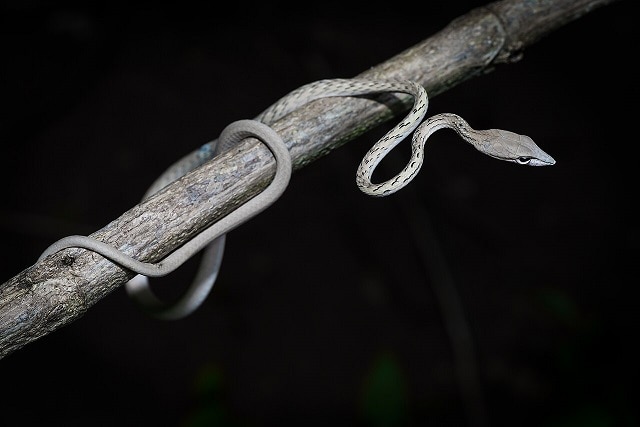
If you’re a believer in ghosts, and a believer that animals can become ghosts as well as humans and haunt the jungles where they once lived, then look to the Asian vine snake for evidence. This is normally king of the green snakes, looking like a swinging jungle vine that sprouted eyes. It’s also renowned for its ultra thin body and weird black pupils shaped like sideways keyholes.
However, Asian vine snakes have many morphs, including yellow, ghostly white, and brown, which have long brought amazement to the explorers who stumble across them. The patterns also vary. The typical green snake has very few, but a yellow Asian vine snake has black checkers on its back. A parched beige morph with black and white lines exists, as does a silvery white with blue tinges.
The one characteristic that remains constant is the strangely shaped pupils, which are neither round nor vertical. Green Asian vine snakes also possess a green tongue, extending from their body, and this tongue changes with the scales.
| 7 | Australian green tree snake |
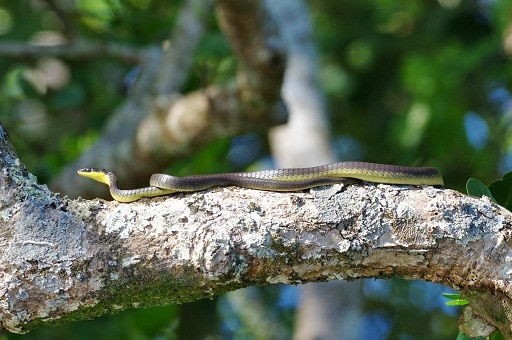
Green tree snakes (Dendrelaphis punctulatus) all have something in common when zoomed in, as they always have large bulbous eyes and happy, smiling mouths. They have good reason to be happy, as this is a fast, nimble species which can zip up 10 metre trees with ease even if there’s no supporting branches. However, this snake varies significantly in its colour. The most common is a solid green back contrasting against a solid yellow belly, with few patterns. But others have a grey back instead, and this varies from light grey to near black.
The belly can be green tinted, or a far lighter cream, and these can be mixed and matched in various combos. Better yet, some Dendrelaphis punctulatus have the richest blue tones of any snake alive, looking more like a mutated eel used by Seaworld to drum up ticket sales. Like the green, this blue spreads all along their body in a solid unbroken pattern.
Believe it or not, this picture isn’t photoshopped. There’s also an inbetween blue grade where turquoise splashings are just visible on the sides. Dendrelaphis punctulatus is non-venomous, and common on Australia’s east coast. Everyone has a chance to find these freaky snakes.
| 8 | Wagler’s pitviper |

In Malaysia, there lies a Buddhist stronghold called Temple of the Azure shrine, surrounded by forests. This temple is crawling with Wagler’s pitvipers, which the monks believe are rendered harmless by sacred smoke, and hence, this venomous species is also known as the temple pitviper. Its other claim to fame is a huge variety in colour, which is most obvious between the sexes.
Males are a bright green colour to blend in with the forests they inhabit, overlaid with red and white spots. Females are a dark green to near black, overlaid with yellow cross bands. As juveniles, females are green like the males, but evolve as they grow, while males barely change with age. The two almost look like different species. There’s also variety within the sexes, as males can appear almost blue.
Zoom into their faces and the differences grow ever stronger. Males have a red stripe across their naturalistic green face, while females have technological colours belonging in an F1 garage. Only an expert could realise that these two snakes were one while stumbling through the forest.
| 9 | Blood python |
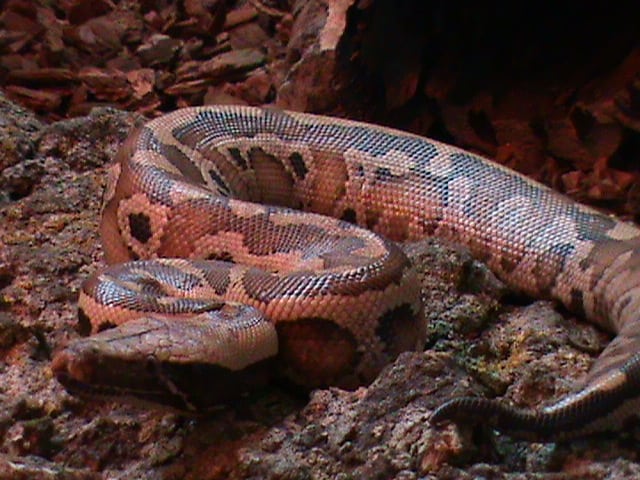
The blood python is one of the most popular snakes among reptile keepers, mainly because of their endless colours. While many morphs are down to enthusiastic captive breeders, there’s a virtual rainbow even in the wild, in the stifling swamp environments they call home.
The average blood python is a mixture of reddish-yellow and bright bloody red, which almost look like raw scaleless patches. According to a 1998 study covering 2063 wild blood pythons, 65% are red, but 26% were brown, 5% were brown and 4% were orange. The polymorphism even spreads to their tongues, which are usually black, but often pink. There are differences within the red colour, as the yellow between the blotches can sometimes be a steely metallic grey instead.
Individual blood pythons also vary, as they can change their own colour, particularly the head, which randomly shifts from black to red to cyborg grey. Blood pythons are so variable that hatchlings within a single clutch can have different colours. Thousands of this species are exported to Europe annually for luxury fashion, and Indonesian traders report that red snakes have the highest quality skins.
| 10 | Dice snake |
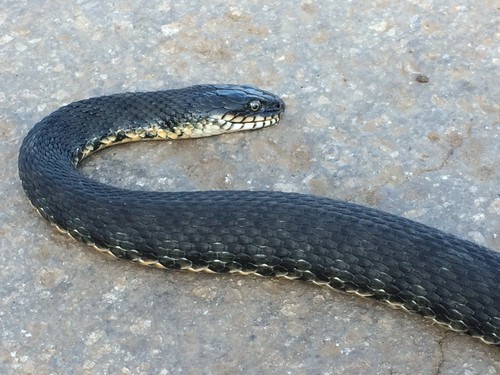
The eastern cousin of the grass snake, the dice snake is both more water-faring and more variable in colour. The typical dice snake looks quite dull, with alternating brown and black scales which blend smoothly rather than contrasting sharply. However, others have jet black backs, contrasting sharply against a yellow underside like a Halloween cake. Black morphs have been detected in Greece, and these can look so unusual that they’re barely identifiable as the same species. A local fisherman might be scratching his head for weeks over exactly what snake he’d seen.
This time, certain colours have been pinpointed to certain locations. One of their strongholds is Histria, 2000 year old ruins in Romania sandwiched between two lakes (great breeding grounds), and these tend to be olive-green. But there’s still variety within populations. On the Macedonian lake island of Golem Grad (another hotspot), the colours were found to be 58% spotted, 29% grey, and 13% black.
Lake Garda in Italy is a hotbed of weird colours. You can find dice snakes with mossy green shades, alternating black and white like a domino set, and with no patterns at all.
